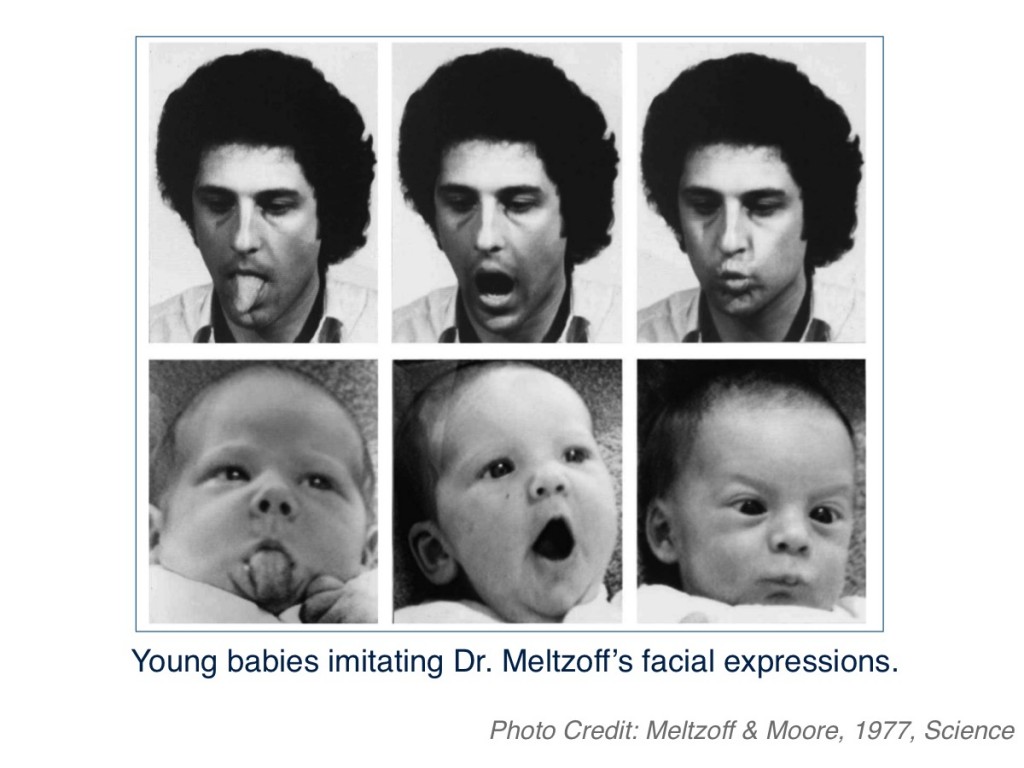
In the early days of psychology, many people thought infants were a blank slate at birth. But research revised this blank slate idea. One significant discovery came from a researcher named Dr. Andrew Meltzoff. He wondered whether newborn infants feel socially connected to others and are born learning. So he stuck out his tongue at a newborn baby. And the newborn baby stuck out her tongue back at Dr. Meltzoff. The youngest infant tested was only 42 minutes old, and had never seen a mirror or these facial expressions before. Yet, she was matching her own motor movements (sticking out her tongue) to the motor movements of an adult. This newborn baby was showing that she felt a similarity with others. Dr. Meltzoff likes to say that newborn babies already know that others are “like me.”
Because of this research, more people began to believe that babies are not born a blank slate. This prompted more research to explore the social world of babies. Finally, people began to accept that infants are born learning. Today, we have a new view about how newborns arrive in the world. Early feelings of social emotional connection are present from the day a baby is born. This module explores early imitation, an important aspect of children’s social-emotional development.
-
- Control group
- a group in a study who does not receive the treatment. The group serves as a comparison for the experimental group.
- Deferred imitation
- reproducing a behavior after a delay from its initial demonstration
- Electroencephalography (EEG)
- a method used to measure electrical activity in the brain
- Generalization
- the ability to apply something learned in one situation to a new situation
- Imitation
- observing then reproducing, or copying, a behavior
- Mirror neurons
- a type of brain cell. Mirror neurons respond when an animal produces an action and when they observe another animal produce the same action.
- Theory of mind
- the awareness that other people can have different thoughts and feelings from one’s own
- Trial-and-error learning
- trying different actions until you perform the right one